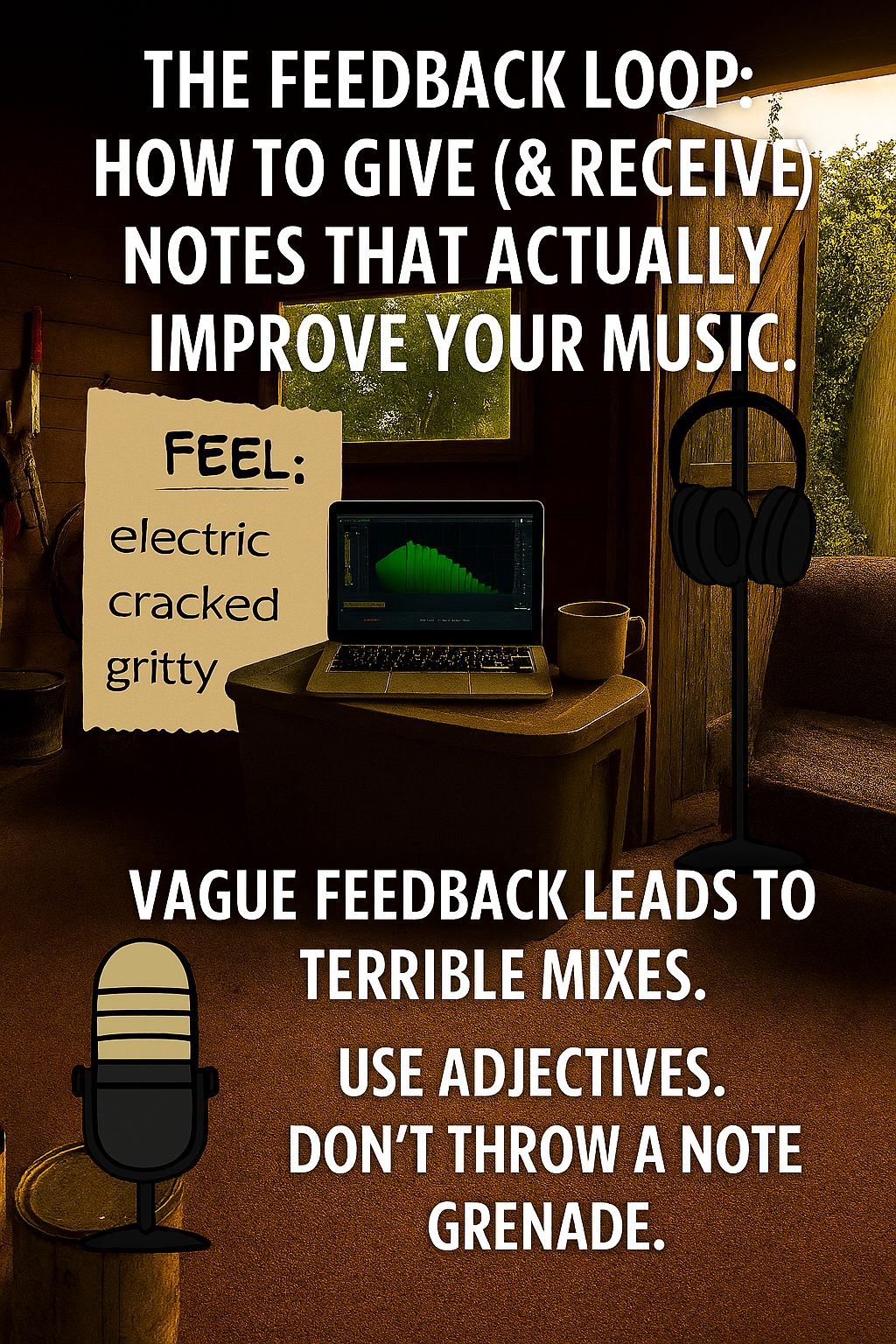The Feedback Loop: How to Give (and Receive) Notes That Actually Improve Your Music
You’ve poured your heart into the song. You’ve recorded the vocals, shaped the mix, and now… it’s time for feedback.
Cue the awkward silence, vague comments, or worse — the dreaded “I don’t know, it just doesn’t feel right.”
But here’s the truth: feedback isn’t a threat. It’s a tool. And when you know how to give and receive it well, your music gets better - not just technically, but emotionally.
This post is for artists who want to stay in creative control without doing it all themselves. Whether you’re working with a mix engineer (like me) or just bouncing ideas off your bandmate, here’s how to make the feedback loop actually work.
1. Give Feedback That’s Emotional, Not Just Technical
You don’t need to speak “engineer.” You just need to speak feeling.
Instead of:
“Can you make the vocal brighter?”
Try:
“I want the vocal to feel more vulnerable - like I’m whispering in someone’s ear.”
Why it works: Emotional language gives your mixer a creative target. We’ll figure out the technical route - you just tell us where you want to go.
2. Use Adjectives, Not Apologies
You’re allowed to have opinions. You’re allowed to not like something. You’re allowed to say, “This doesn’t feel like me.”
Try this:
“The chorus feels too clean - I want it to sound more cracked and raw.”
“The reverb’s nice, but it’s making the vocal feel distant. Can we bring it closer?”
Pro tip: Keep a running list of adjectives that describe your sound. “Warm,” “gritty,” “cinematic,” “moody” - these are gold.
3. When You’re Receiving Feedback - Don’t Flinch
Whether it’s your producer, your partner, or your audience, feedback can sting. But it’s not personal - it’s directional.
Try this mindset shift:
Instead of “They don’t like it,” think “They’re helping me find the version that hits harder.”
What to ask:
“What moment pulled you in?”
“Where did your attention drift?”
“What did you want to feel that you didn’t?”
4. Feedback Is a Loop — Not a Verdict
The first round of notes isn’t the end. It’s the beginning of a conversation.
Be specific, but open.
Be honest, but kind.
Be clear, but curious.
If you’re working with me: I’ll always ask what you’re hearing - and what you’re hoping to hear. That’s where the magic lives.
Free Plugin of the Week:
Ever get feedback like “it’s too quiet” or “it’s too squashed”? This free plugin helps you see what you’re hearing - and gives you language to talk about dynamics, loudness, and energy. Perfect for rough mixes or reference checks.
Final Thought
You don’t need to be a mix engineer to shape your sound. You just need to know how to talk about it.
When you give feedback with clarity and receive it with curiosity, your music becomes more you - not less.
And if you’re ready to work with someone who listens as hard as they mix, I’d love to help.

